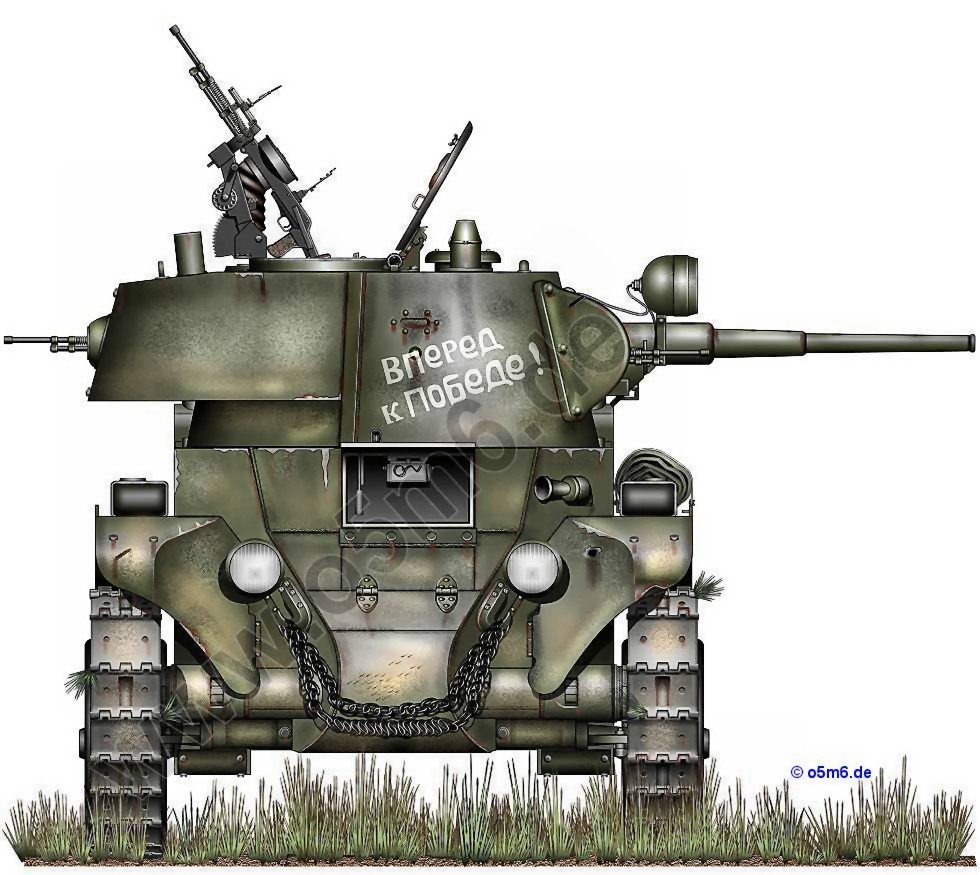
Late 1937 or 1938 model with rear and P-40 AA mg as well as combat lights
BT-7 Model 1937 Fast Tank
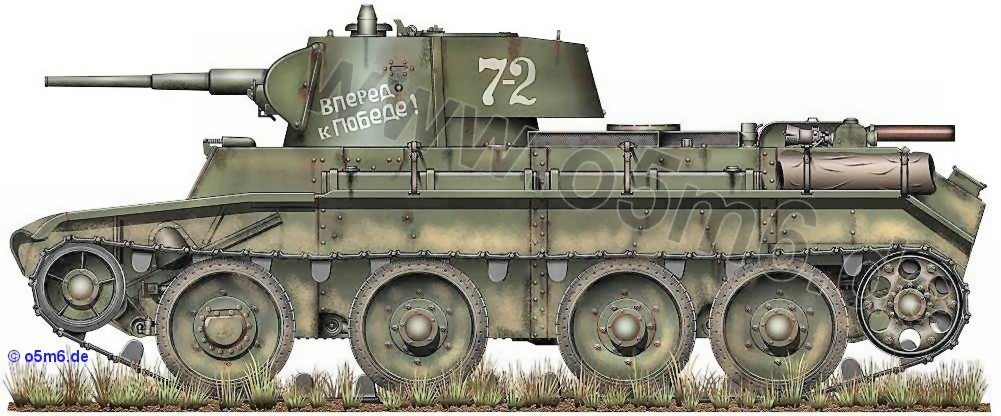
Standard production model 1937
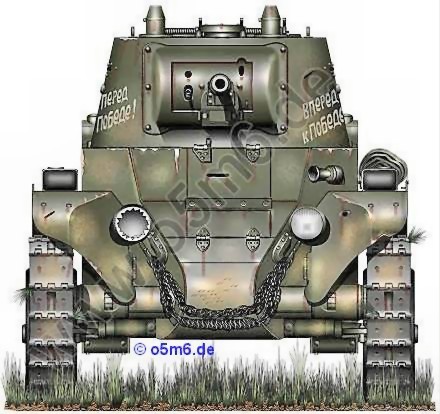
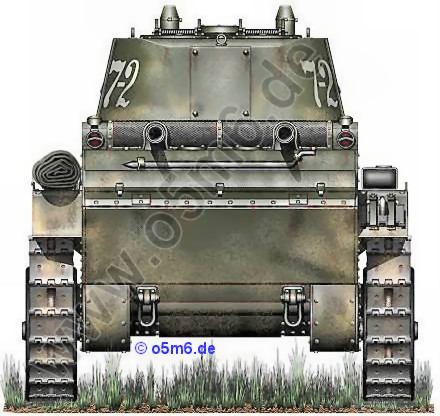
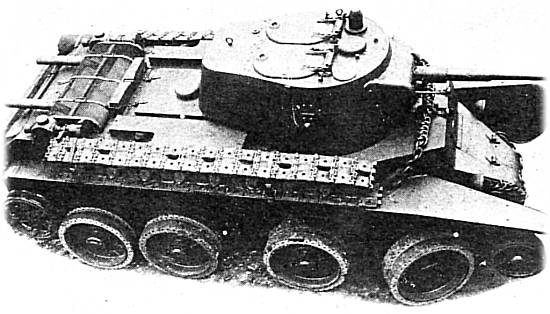
BT-7 Model 1937 Fast Tank
In 1937, an all welded turret was introduced on the assembly lines, leading to the BT-7 Model 1937.
The new turret was not only all welded, but had angled sides to offer better ballistic protection.
By this stage, most BT-7's had whip antennas, though it was not entirely unknown to see them fitted with the old type "horseshoe" antennas.
For the effective night shooting a two special headlights have been placed on the gun's mantlet. Subsequently all earlier produced tanks were equipped with such headlights.
In 1938, the final derivative of the BT series began development.
A new experimental diesel engine, the V-2 based on the Hispano-Suiza 12Y aero engine, was fitted in BT-7 and BT-5 hulls for trials and was accepted for service use as substitution of the aged M-17 aggregate.
It was decided to mount these in the BT-7, and the V-2 powered BT-7s were initially called BT-7M, though eventually they became called BT-8 to avoid confusion.
Like late production BT-7 Model 1937, it had a ball-mounted machine-gun in the turret rear, but redesigned hatches on the roof permitted use of a P-40 mg mount for anti-aircraft protection.
Production of the BT-8 began late in 1939 and few were produced until 1940 when 706 were manufactured.
Out of the 7000 BT's manufactured, about 1000 were BT-8 and production ceased in 1941 due to expanded T-34 production at KhPZ.
The new turret was not only all welded, but had angled sides to offer better ballistic protection.
By this stage, most BT-7's had whip antennas, though it was not entirely unknown to see them fitted with the old type "horseshoe" antennas.
For the effective night shooting a two special headlights have been placed on the gun's mantlet. Subsequently all earlier produced tanks were equipped with such headlights.
In 1938, the final derivative of the BT series began development.
A new experimental diesel engine, the V-2 based on the Hispano-Suiza 12Y aero engine, was fitted in BT-7 and BT-5 hulls for trials and was accepted for service use as substitution of the aged M-17 aggregate.
It was decided to mount these in the BT-7, and the V-2 powered BT-7s were initially called BT-7M, though eventually they became called BT-8 to avoid confusion.
Like late production BT-7 Model 1937, it had a ball-mounted machine-gun in the turret rear, but redesigned hatches on the roof permitted use of a P-40 mg mount for anti-aircraft protection.
Production of the BT-8 began late in 1939 and few were produced until 1940 when 706 were manufactured.
Out of the 7000 BT's manufactured, about 1000 were BT-8 and production ceased in 1941 due to expanded T-34 production at KhPZ.
Sources : Milsom, »Russian BT series«, AFV Weapons #37, and Zaloga/Grandsen, »Soviet Fast Tanks«, Military Modelling Jan.1982
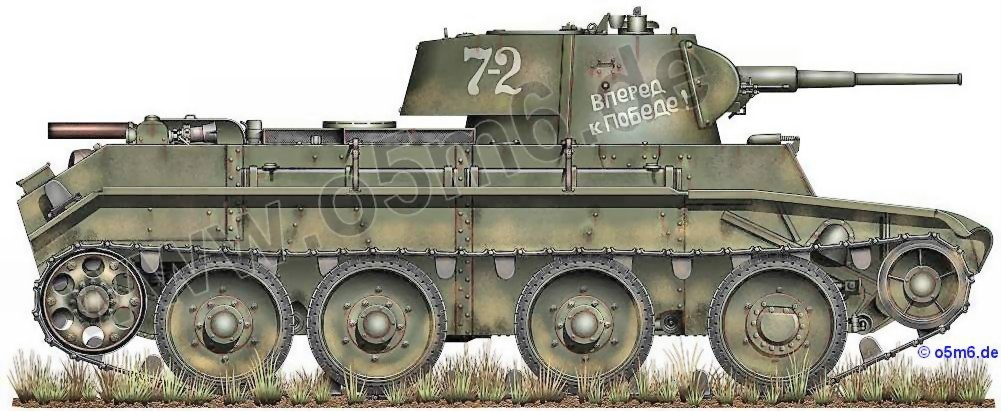
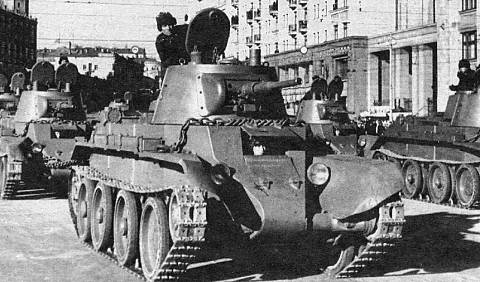
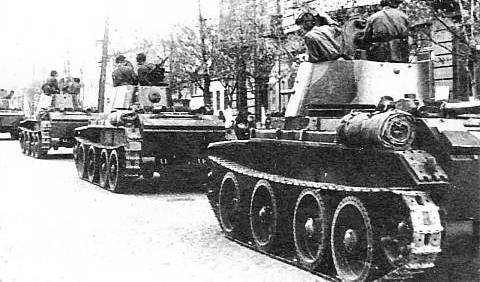
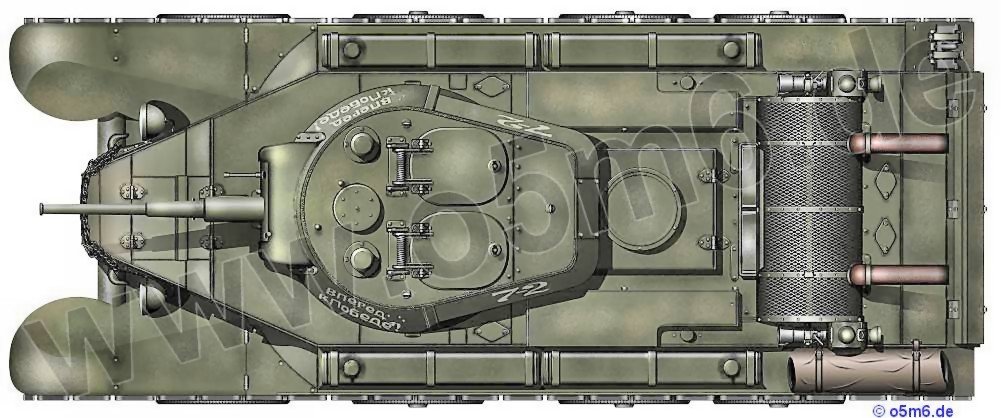
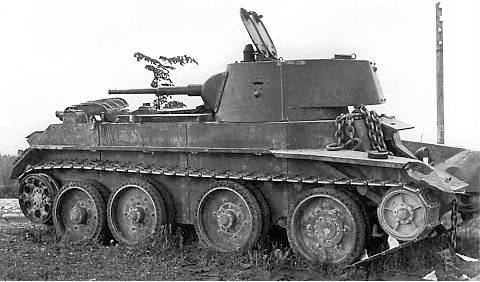
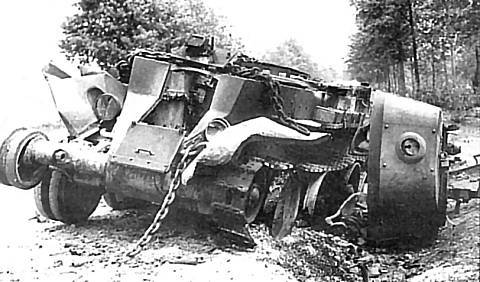
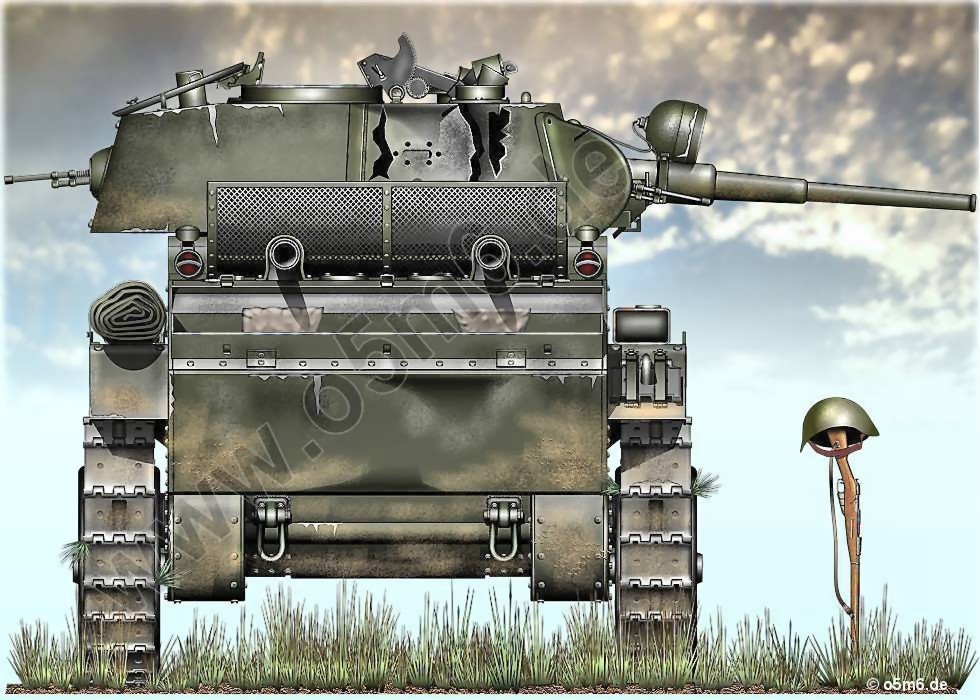
Late production model... damaged and abandoned
All drawings © o5m6.de .All rights reserved.
No publication in any form without the author's written permission.
Last Updated: May 30, 2008
No publication in any form without the author's written permission.
Last Updated: May 30, 2008